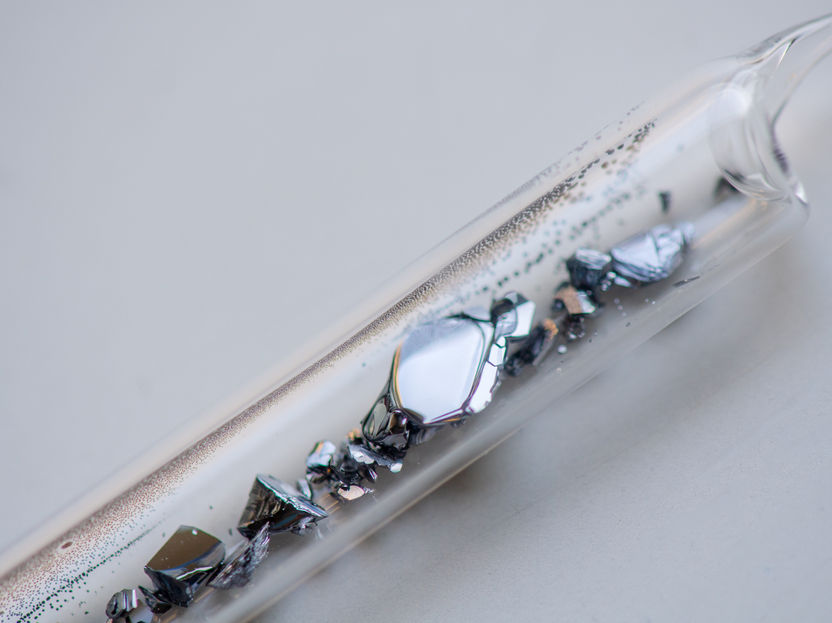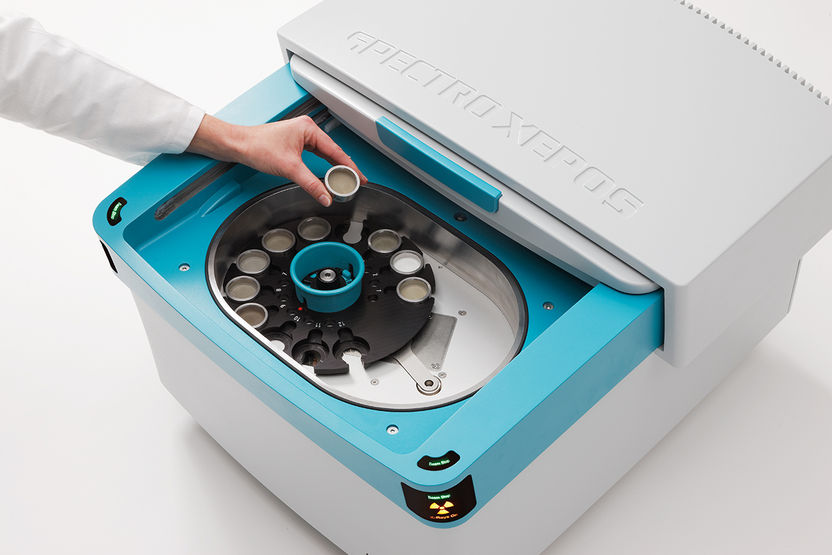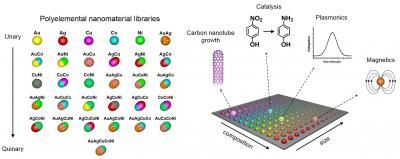New material will make locally flexible diodes possible
Temperature changes material characteristics: Researchers find new material with significant potential for electronics applications
diodes allow directed flows of current. Without them, modern electronics would be inconceivable. Until now, they had to be made out of two materials with different characteristics. A research team at the Technical University of Munich (TUM) has now discovered a material that makes it possible to create a diode with a simple change in temperature.

The picture shows large crystals of Ag18Cu3Te11Cl3, which are in a silica glass ampoule. In this ampoule, the compound of the elements, silver, copper, tellurium and the halides is produced under vacuum. Diodes ensure a directional current flow and are an indispensable part of modern electronics. Until now, they have had to be built from two materials with different properties. A research team at the Technical University of Munich (TUM) has now discovered a material that makes it possible to create a diode by a simple temperature change.
A. Heddergott / TUM
Manufacturing a diode generally involves combining two semiconducting materials with different properties. In most cases these are modified forms of silicon to which different elements are added to create the desired characteristics. This process is known as doping.
Doping with phosphorus, arsenic or antimony, which adds free electrons to the material, is called n-type doping. The n refers to the negatively charged electrons. Boron, aluminum and gallium, by contrast, bind electrons from the silicon, resulting in positively charged holes. The material is p-doped. Combining the two materials produces a diode that permits the current to flow only in one direction.
Temperature changes material characteristics
“We have now found a material which we can cause to be n-conducting or p-conducting simply by changing the temperature,” says Tom Nilges,professor of Synthesis and Characterisation of Innovative Materials at TUM. The researchers have been able to show that a temperature change of just a few degrees is enough to bring about this effect – and that a functioning diode can be created with a temperature gradient within the material.
“When the material is at room temperature, we have a completely normal p conductor. If we then apply a temperature gradient, we can simultaneously generate an n conductor in the heated areas,” explains Prof. Nilges. An important aspect for applications: the effect functions in room temperature ranges. “To generate a diode, a local temperature rise of just a few degrees is enough – in our case from 22 to 35°C.”
For Nilges, the elimination of the need for doping is not the only advantage: “Every diode that is produced is always there. With our material that is not the case: with the temperature gradient, the diode also disappears. If it is needed again, it is enough to create a temperature gradient. If we think about the range of applications for diodes, for example in solar cells or in every kind of electronic component, the potential of this invention becomes evident.”
Complex composition
The search for the perfect material involved 12 years of work, which has now culminated in the team’s discovery of the coinage metal chalcogenide halide Ag18Cu3Te11Cl3. It consists of the elements silver, copper, tellurium and chlorine. The researchers came across this class of compounds when exploring thermoelectric materials, which generate electricity from heat. One material they studied displayed the p-n switching effect. However, this was observed only in the temperature range around 100°C, which is unsuitable for practical applications.
After extensive analysis and experimentation, in Ag18Cu3Te11Cl3 the researchers discovered a material that displays the desired effect and is also suitable for applications at normal temperatures. “Other research groups have also discovered this switching effect in various materials, but so far nobody has managed to convert it into a specific application,” explains Nilges.
As the next step the researchers plan to show that their material can be used to create transistors through temperature changes.
Original publication
Most read news
Original publication
Vogel, A., Rabenbauer, A., Deng, P., Steib, R., Böger, T., Zeier, W.G., Siegel, R., Senker, J., Daisenberger, D., Nisi, K., Holleitner, A.W., Venturini, J. and Nilges, T. (2022), A Switchable One-Compound Diode. Adv. Mater.. Accepted Author Manuscript 2208698
Topics
Organizations
Other news from the department science

Get the chemical industry in your inbox
By submitting this form you agree that LUMITOS AG will send you the newsletter(s) selected above by email. Your data will not be passed on to third parties. Your data will be stored and processed in accordance with our data protection regulations. LUMITOS may contact you by email for the purpose of advertising or market and opinion surveys. You can revoke your consent at any time without giving reasons to LUMITOS AG, Ernst-Augustin-Str. 2, 12489 Berlin, Germany or by e-mail at revoke@lumitos.com with effect for the future. In addition, each email contains a link to unsubscribe from the corresponding newsletter.
Most read news
More news from our other portals
Last viewed contents





























































